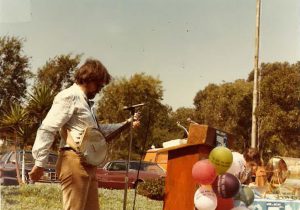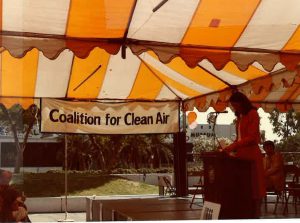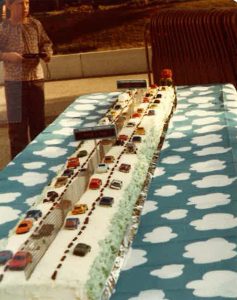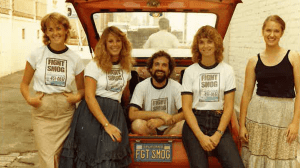Air quality in California is a tale of challenge and progress, obstacle and victory. For over five decades, the Coalition for Clean Air (CCA) has been at the forefront of this fight, working tirelessly to clear the skies and ensure healthier air for all Californians. Over the next few weeks, we’re going to explore CCA’s remarkable journey, revisiting each decade to understand how we got where we are today and what challenges still lie ahead. I hope I’ll be able to show you why I believe in this organization and why I think you should too.
1970s: A Pivotal Decade for Environmentalism
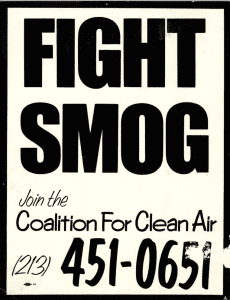 In the 70s, a growing distrust of the government, the ongoing war, and a surge in social movements created fertile ground for the rise of environmental regulations, activism, and global awareness. In 1970 we witnessed the establishment of the Environmental Protection Agency (EPA), the first-ever Earth Day celebration, and the passage of the Clean Air Act, a landmark piece of legislation that would forever shape air quality efforts in the United States.
In the 70s, a growing distrust of the government, the ongoing war, and a surge in social movements created fertile ground for the rise of environmental regulations, activism, and global awareness. In 1970 we witnessed the establishment of the Environmental Protection Agency (EPA), the first-ever Earth Day celebration, and the passage of the Clean Air Act, a landmark piece of legislation that would forever shape air quality efforts in the United States.
The Clean Air Act established federal and state regulations to limit emissions from both stationary sources (like factories and power plants) and mobile sources (primarily vehicles). This groundbreaking legislation paved the way for cleaner air and provided a framework for future environmental protection efforts. Paul G. Rogers, Chair of the House Subcommittee on Health and the Environment at the time, said, “the 1970 amendments moved environmental protection concerns to a prominent position on Capitol Hill, where they by and large have remained ever since.” Four new national regulatory programs were initiated, and the newly minted Environmental Protection Agency was given both the authority and the legal obligation to implement the requirements of the new law.
Joining Forces for Change
In Southern California in 1971, the haze of brown smog obscuring the ubiquitous palm trees was a grim testament to our massive air pollution problem. At the time, it was viewed as a “Scientists’ issue,” marked by complex jargon and debates that made it difficult for the general public to engage with the issue, let alone counter the arguments presented by industries like Big Oil, who were deeply invested in opposing air pollution regulation. Recognizing the need for a unified voice and collective action, pioneering organizations like the Audubon Society, American Lung Association, Sierra Club, and GASP (Group Against Smog Pollution) came together to form the Coalition for Clean Air, a place for organizations to share information with one another and dig into understanding the issue at hand. Ralph Perry, Gladys Meade, Sabrina Schiller, Ward Elliott, David Hirsch, Edythe Koch, and Bill Greninger were some of the key individuals who laid the foundation for what would become a powerful force for change.
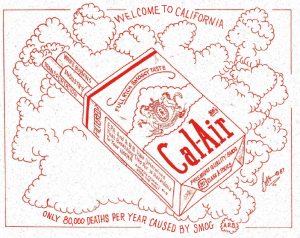
“Environmental groups were springing up left and right,” according to Ward Elliott, “the trouble was, the groups were fighting like Gauls. They flailed around; they got tangled up with each other; there was no co-ordination, not much homework, no sense of priorities.”
With no paid staff and almost zero resources (a budget of less than $3,000, in fact), but with a passion for the right of Californians to breathe clean air, CCA began to grow into one of the state’s most prominent voices for environmental policy, championing legislation that has impacted through the decades. Throughout the 70s, this coalition of organizations stepped up to bridge the knowledge gap, translating complex scientific concepts into accessible language and empowering individuals to understand they could take action and help clear the air. Ultimately, they decided it was best transition to an individual -based membership and CCA as we know it was born.
Making a Scene
On a sunny Southern California afternoon, I sat down with Sabrina Schiller, CCA’s first fundraiser and later board member, and Mark Abramowitz, former volunteer, staff, and board member, to hear about CCA’s early years from two of the people who were most pivotal in creating our legacy (we’ll be learning more about Mark in our next post). It was a gift to sit and listen to the two of them reminisce. Sabrina Schiller is a force to be reckoned with. She had, and has, a boundless energy, a willingness to ask anyone for anything, and a belief that something could be done about air quality, someone only needed to do it.
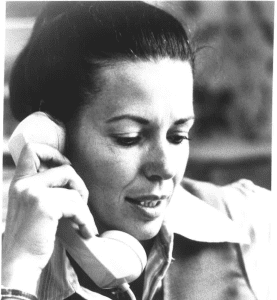
Sabrina told me that, at the time, environmental advocacy work was seen as “totally radical, way out there.” And she was ready to get way out there. She considered herself an activist and dedicated herself wholly to the task at hand.
From stunts to sticker bombing Los Angeles, bringing along her nursing baby to meetings, cooking for events, and asking everyone she knew to support the organization, Sabrina employed innovative tactics to capture public attention and drive home the urgency of environmental action.
Mark Abramowitz tells me, “Once, in the 80’s, I decided I would keep up with [Sabrina]. Well, try to keep up anyways. By the end of just one week, I was sick and gave up!”
My take? Sabrina Schiller is a woman who can’t and won’t be stopped. Honestly, what I’ve shared in this, and the next blog is just the tip of the iceberg on Sabrina’s stories and accomplishments in life.
The Work
With Ralph Perry holding down the fort, and Sabrina on a mission, a group of dedicated volunteers and member organizations churned out a ton of work. “When you think of CCA in the early days,” she told me, “think Sisyphus rolling the bolder back up the hill every day”. I was glad she made the comparison, because to be perfectly honest, it still feels that way. I worry that some things may never change, but icons like Sabrina inspire me to keep pushing for our clean air goals.
Share-A-Ride Day
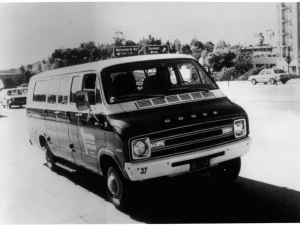 In 1971, CCA hosted the first ever Share-A-Ride Day, which they would re-create frequently throughout the 70’s and early 80’s and foreshadows our current public action campaign, California Clean Air Day. The group knew one thing for sure: gasoline was affecting air quality and they needed to encourage the public to take action and get cars off the roads.
In 1971, CCA hosted the first ever Share-A-Ride Day, which they would re-create frequently throughout the 70’s and early 80’s and foreshadows our current public action campaign, California Clean Air Day. The group knew one thing for sure: gasoline was affecting air quality and they needed to encourage the public to take action and get cars off the roads.
Engaging the Public
With the same goal, the group published “You Can Do Something About Air Pollution,” a report that used CCA’s work to explain air pollution and make it accessible to the public. By taking complex chemistry and translating it into terms the public could understand, they were able to make some meaningful headway. Suddenly, complex ideas could be communicated simply, and individuals could understand their role in reducing air pollution.
Publicity Stunts
Mid-decade, CCA began publishing Legislative Report Cards, to heighten public awareness of air quality issues and the role legislators were playing in cleaning up California’s air (or not). Covering California State Assembly and Senate members, as well as Los Angeles City Council and Board of Supervisors, the Report Cards were a jumping off point for the group’s political advocacy in the 80’s. One year on Easter, after the Los Angeles report cards had been published, Sabrina Schiller dressed in a full body Easter Bunny costume and delivered rotten eggs to Supervisor Kenneth Hahn personally to “thank him” for his commitment to air quality.
One of my personal favorite Sabrina stories from this time was the Very Unhappy Birthday Party for Smog. Also an excellent baker and cook, on top of being an activist, mother, CCA staff member, Sacramento Lobbyist, and executing a California State Senate campaign (which she lost by less than 700 votes), she baked a gigantic cake in the shape of a freeway, decorated with toy cars and mini-freeway signs to “celebrate” Los Angeles’ terrible smog problem.
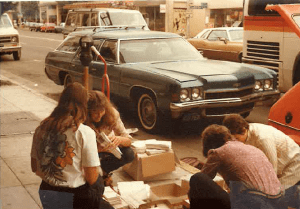
What I truly love about this decade of CCA’s history is that it’s so alive, so electric. It was early in the fight, and there was an air of optimism that smog COULD be solved, perhaps in as little as a decade. Of course, the problem would continue to grow more complex and broader in scope, but at the time, the belief was there, and so was the heart.
TLDR: Ralph Perry and the rest of the team at CCA saw an issue and rushed to solve it in whatever ways they could, bringing folks together to understand the issue, called out politicians, and engaged Californians to FIGHT SMOG!
[row]
[col span=”1/3″]
